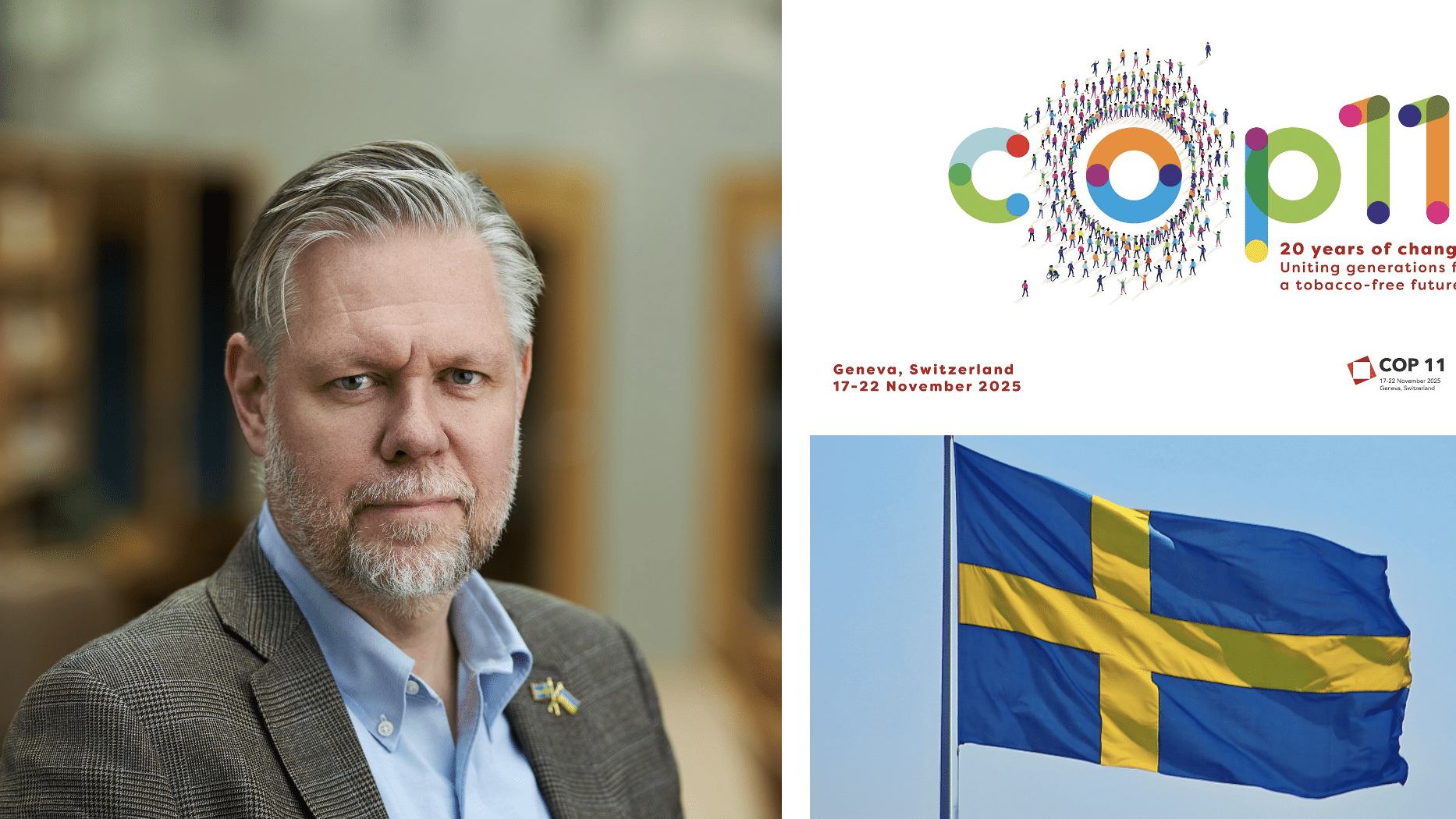
COP11 slams, rather than celebrates, Sweden’s smoke-free success
Anti-tobacco and nicotine advocacy groups devoted an entire COP11 side event in Geneva on Tuesday to questioning the role of snus and nicotine pouches in Sweden’s historic collapse in smoking rates.
The 75-minute closed-door session was organised by the Smoke-Free Partnership (SFP), aimed at challenging what has become one of the most widely cited public-health success stories in Europe: Sweden’s near elimination of daily smoking.
Titled “Something Old, Something New: The Tobacco Industry’s Misleading Narrative on Swedish Experience,” the event brought together speakers from seven different countries to argue that Sweden’s dramatic fall in smoking rates should not be interpreted as evidence for tobacco harm reduction.
Rather, they argued that credit should instead be given to traditional tobacco control measures, despite Sweden’s comparatively low ranking in the Tobacco Control Scale.
But the very need for such a session underscored a growing tension within global tobacco control: while Sweden is poised to reach the WHO’s “smoke-free” benchmark of under 5 percent daily smoking, it is being criticised – not celebrated – at COP11.
The panel argued that Sweden’s low smoking rates are the result of traditional tobacco-control tools such as advertising bans, taxation, and smoke-free laws, not the availability of less-harmful alternatives like snus and nicotine pouches.
Speakers chose to highlight concerns about increased snus and pouch use among youth and women in Sweden, framing these products as a threat rather than a public-health opportunity.
At no point to participants celebrate or even acknowledge Sweden’s historically low smoking rates. Instead, one was left with the impression that Sweden was a laggard rather than a leader compared to its peers across Europe and the world when it came to getting citizens to qut.
Framing smoke-free Sweden as an ‘industry tool’
SFP Director Erin Roman opened the session by stating that Sweden’s success has been “misrepresented” as the result of snus and nicotine-pouch use, dismissing it as a narrative she said the tobacco industry uses to “manipulate the policy debate”.
Roman argued that Sweden’s declining smoking rates are instead “entirely the product” of strict legislation, adding that oral-nicotine products are “not harmless” and are increasingly used by young people.
Next, Lisa Lennartsdotter Ermann of the Swedish Cancer Society took the floor to claim that the effect of snus on reducing smoking is “limited,” arguing instead that snus and pouches function as “entry products” that contribute to dual use.
Even though Sweden ranks no higher than 20 in the recent Tobacco Control Scale, she concluded that Sweden’s falling smoking rate nevertheless comes only from “decisive tobacco-control measures” and said all nicotine products should face equal regulation.
Swedish Experience as industry ‘storytelling’
Karin Silver of Tobacco Tactics then used her time to focus on the idea of third-party “industry front groups”, accusing them of promoting “Quit Like Sweden” messaging through doctors and health professionals.
She warned that women and young people in particular are being targeted through subtle messaging and social-media content. Silver warned against falling for tobacco industry efforts to use Sweden to promote harm-reduction products. Instead, she preached the importance of efficient policymaking and stronger regulatory protections.
Reinforcing the youth protection narrative
In the ensuing panel discussion, representatives Norway, France, the Netherlands, Denmark and Kenya expanded on the session’s central theme: that oral nicotine products are increasingly being used by young people and therefore require strict regulation.
Nonguebzanga Maxime Compaore of the Norwegian Cancer Society argued that although Sweden and Norway share cultural similarities, Sweden’s harm-reduction model distracts from the “real mechanisms” of tobacco control. He warned that novel nicotine products are attracting youth in both countries, comparing the industry’s highlighting of Sweden as “greenwashing” that hampers FCTC implementation.
More regulation rather than research
Amélie Eschenbrenner from the National Committee Against Smoking in France echoed these concerns, insisting that nicotine – regardless of product form – is incompatible with a public-health strategy.
She pointed to France’s recent ban on nicotine pouches as evidence of a strong policy response, arguing that early reactions have been positive and that more European countries are moving in the same direction.
From the Dutch Heart Foundation, Dennis van Driel emphasised the role of flavours, packaging and online promotion in making oral nicotine products appealing to minors. He claimed there were cardiovascular risks associated with novel products, arguing for strong regulatory measures.
Same anti-industry arguments, same scientific ignorance
Niels Them Kjær of the Danish Cancer Society focused on cross-border sales and digital marketing, expressing concern that Sweden’s experience is being used by the industry to influence Danish policy debates.
These concerns were echoed by Celine Awuor of Kenya’s International Institute For Legislative Affairs, who noted that the Swedish model is increasingly referenced in African policy discussions. He argued for increased international cooperation and stronger regulation to tackle the spread of nicotine products.
Rounding out the discussion, Helen Stjerna of Swedish taxpayer-funded NGO A Non-Smoking Generation stated that snus and nicotine-pouch use has increased among Swedish youth, due to aggressive marketing and social-media visibility.
She argued that oral products do not represent a public-health solution but rather open “new pathways to addiction” and reiterated the need for stronger prevention measures aimed at keeping children and adolescents tobacco-free.
Yet the broader data tell a more complex story. Sweden not only has the lowest smoking rate in the EU, but it also has among the lowest levels of smoking-related disease and mortality.
Lung-cancer incidence among Swedish men, for example, is far below the European average, a pattern that researchers have repeatedly linked to the country’s long-standing use of snus as a substitute for cigarettes. Similar trends are seen in cardiovascular mortality and other tobacco-related illnesses.
But the small window for any actual discussion at the end of the session conveniently ignored the public health data, focusing instead on the comparability of different markets.




